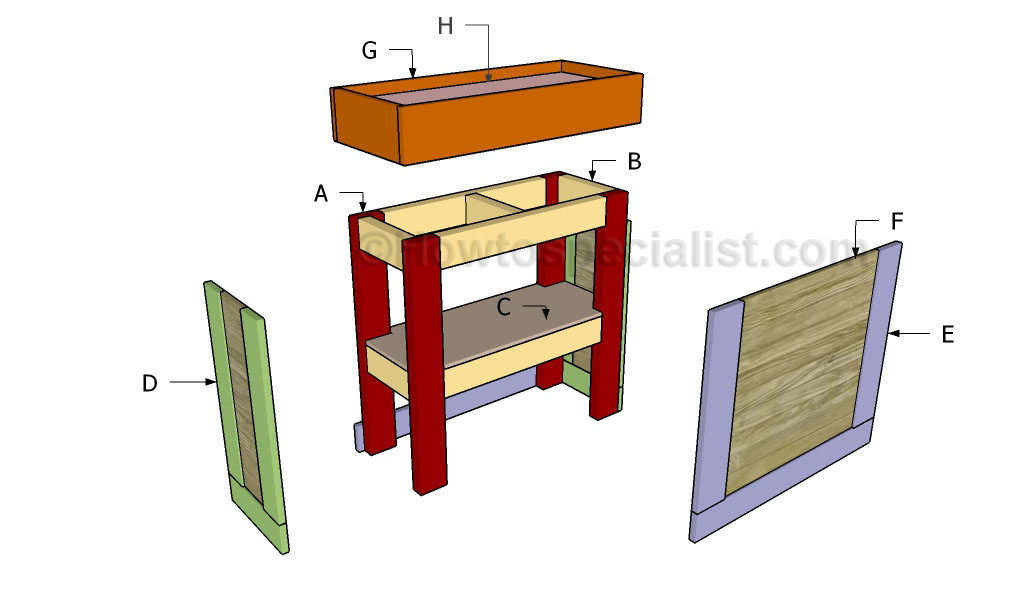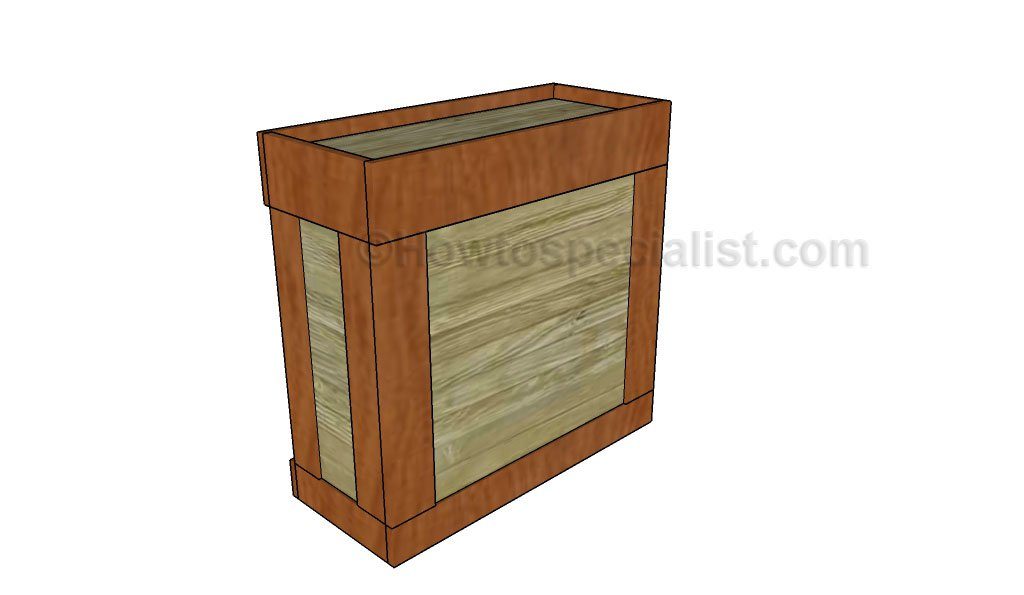Aquarium Stand
- A – Legs – 4 pieces of 2×4 Lumber – 29 1/2″ long
- B – Frame – 4 pieces of 2×4 Lumber – 23 1/2″ long
- C – Shelf – 1 piece of 3/4″ plywood – 30 1/2″ x 11 3/4″
- D – Trims – 2 pieces of 1×4 Lumber – 1 @ 22 1/4″, 1 @ 12 1/4″
- E – Trims – 2 pieces of 1×4 Lumber – 1 @ 22 1/4″, 1 @ 32″
- F – Panels – 2 pieces of 1/2″ plywood – 1 @ 5 1/4″ x 22 1/4″, 1 @ 22 1/4″ x 23 1/2″
- G – Top Trims – 4 pieces of 1×6 Lumber – 2 @ 22 1/4″, 2 @32″
- H – Tabletop – 1 piece of 3/4″ plywood – 12 1/4″ x 30 1/2″
The first step of the woodworking project is to build the faces for the aquarium stand. As you can easily notice in the diagram, we recommend you to build the components out of 2×4 lumber. Take accurate measurements and drill pilot holes at both ends of the horizontal components. Insert 2 1/2″ screws after making sure the edges are flush and the corners are square. Add glue for a proper bond.
Next, you have to lock the faces of the stand together, as in the diagram. Cut the components out of 2×4 lumber and drill pocket holes at both ends. Fit the components between the faces and lock them together using 2 1/2″ screws. Make sure the corners are square and the edges flush.
Build the bottom shelf out of 3/4″ plywood. Mark the cut lines on the sheet of plywood and get the job done with a circular saw. Smooth the edges and check if the notches are cut out properly.
Fit the shelf to the structure and lock it into position by using a few brad nails. You could add glue to enhance the bond of the components. In addition, we recommend you to make sure the edges are perfectly flush one with another.
Building the front wall for the aquarium stand is a straight forward process. Therefore, use lumber for the frame and 1/2″ plywood for the main panel. Drill pocket holes at both ends of the vertical supports and secure them to the top and bottom trims by using 1 1/4″ screws. Drill pocket holes along the edges of the plywood panel and secure it to the frame by using galvanized screws and glue.
Build the side walls in the same manner described above. Just make sure you adjust the size of the components as in the diagram. Check if the corners are square and make sure there are no gaps between the components.
Continue the project by attaching the exterior walls to the frame. Align the components with great care and secure the panels to the frame studs by using finishing nails. The edges should be perfectly flush for a professional result.
In order to enhance the look of the aquarium stand, you have to attach the trims to the back of the structure, as shown in the diagram. Secure the trims to the structure using brad nails and glue.
One of the last steps of the project is to attach the top component to the stand, as described in the diagram. Cut the piece of plywood at the right dimensions and secure it to the cleats using brad nails and waterproof glue.
Last but not least, we recommend you to take care of the finishing touches. Fill the holes with wood filler and let it to dry out for several hours. Afterwards, smooth the wooden surface with fine-grit sandpaper and vacuum the residues.
This plan can be originally found at http://howtospecialist.com/finishes/furniture/how-to-build-an-aquarium-stand/










